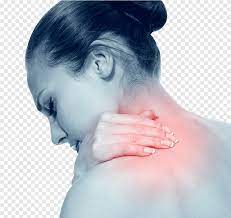Pain is a universal experience, but its nature, intensity, and underlying causes vary significantly from person to person. Whether it is acute or chronic, identifying pain symptoms accurately is essential for choosing the best treatment plan. This article explores different types of pain, how to recognize symptoms, and the most effective ways to manage pain, including the use of pain relief medication and alternative treatments.
Understanding Pain: Types and Causes
Pain can be classified into several categories based on its origin and duration. The most common types include:
-
Acute Pain:
Short-term pain removed with tramadol online that lasts from a few seconds to several weeks.
Common causes include injuries, surgeries, burns, or infections.
Usually subsides as the underlying issue heals.
-
Chronic Pain:
Lasts for more than three months.
Commonly associated with conditions such as arthritis, nerve damage, or fibromyalgia.
Can significantly impact quality of life and require long-term management.
-
Neuropathic Pain:
Results from nerve damage or dysfunction.
Common causes include diabetes, multiple sclerosis, and chemotherapy side effects.
Often described as burning, tingling, or shooting pain.
-
Inflammatory Pain:
Caused by immune system response to injury or disease.
Includes conditions like arthritis, infections, and autoimmune disorders.
-
Referred Pain:
Pain felt in an area of the body different from the source.
Common in conditions like heart attacks, where pain is experienced in the left arm or jaw.
Identifying Pain Symptoms
Understanding and recognizing pain symptoms can help in determining the best treatment plan. Key factors to observe include:
Location: Where the pain is occurring and whether it spreads to other areas.
Intensity: Mild, moderate, or severe pain based on a scale of 1 to 10.
Duration: Whether it is short-lived or persistent.
Nature: Sharp, dull, throbbing, aching, burning, or shooting sensations.
Triggers: Activities or conditions that worsen or relieve the pain.
Choosing the Best Treatment Plan
Once pain symptoms are identified, selecting the right treatment is crucial. Here are some of the most effective pain management strategies:
1. Pain Relief Medication
Pain relief medication is one of the most common approaches to managing pain. The choice of medication depends on the severity and type of pain.
Over-the-Counter (OTC) Medications:
Acetaminophen (Tylenol): Effective for mild to moderate pain and fever reduction.
Non-Steroidal Anti-Inflammatory Drugs (NSAIDs): Ibuprofen, naproxen, and aspirin reduce inflammation and provide relief for conditions like arthritis and muscle pain.
Prescription Medications:
Opioids (Morphine, Oxycodone, Hydrocodone): Used for severe pain management but require careful monitoring due to addiction risks.
Antidepressants & Anticonvulsants: Often prescribed for neuropathic pain conditions like fibromyalgia.
Muscle Relaxants: Help relieve muscle spasms and tension-related pain.
For those looking to order medicine, online pharmacies and telemedicine services provide convenient access to pain relief medication with proper prescriptionsby order oxycodone.
2. Physical Therapy and Rehabilitation
Stretching and strengthening exercises to improve mobility.
Manual therapy, including massage and spinal adjustments.
Posture correction to reduce strain and chronic pain.
3. Alternative and Complementary Treatments
Acupuncture: Stimulates specific points to relieve pain and promote healing.
Chiropractic Care: Adjusts spinal alignment to reduce pain and discomfort.
Herbal and Natural Remedies: Turmeric, ginger, and CBD oil are popular natural pain relievers.
Mind-Body Techniques: Meditation, yoga, and deep-breathing exercises help manage chronic pain conditions.
4. Lifestyle Modifications
Exercise: Regular low-impact activities like walking, swimming, or yoga.
Dietary Changes: Anti-inflammatory diets rich in fruits, vegetables, and omega-3 fatty acids.
Proper Sleep: Essential for healing and reducing pain sensitivity.
5. Surgical Interventions
Considered when other treatments fail.
Includes joint replacements, nerve decompression, and spinal surgery for severe cases.
When to Seek Medical Attention
While minor pain can often be managed at home, certain symptoms require professional medical intervention:
Persistent or worsening pain despite treatment.
Pain accompanied by fever, swelling, or redness.
Sudden, severe pain that interferes with daily activities.
Pain following an injury or accident.
Unexplained weight loss or numbness associated with pain.
Conclusion
Identifying pain symptoms accurately is the first step in developing an effective treatment plan. With options ranging from pain relief medication to physical therapy and alternative treatments, there are multiple ways to manage pain successfully. If you need to order medicine, ensure you consult a healthcare professional to choose the safest and most effective option for your condition. Prioritizing proper pain management can significantly enhance quality of life and overall well-being.
